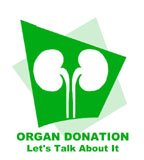Understanding Brain Death
Most of us believe that death occurs when a person's heartbeat and breathing stops. But now that breathing and heartbeat can be maintained by machines….does that mean that the patient is still alive?
The truth is that everyone dies at the time of "brain death”. Whether a person suffers cardiac arrest (stoppage of heartbeat) resulting in the lack of oxygen and nutrients to the brain or a serious head trauma resulting in brain death, it's the same diagnosis. The stoppage of heartbeat is known as ‘cardiac death’ and till date most of us recognized death with cardiac death only. After the 1994 Transplantation of Human Organs Act (India), ‘brain death’ came into the limelight. The Act, aimed at ending the organ (kidney) selling racket by only allowing the first relative to become the donor and also by legalizing and defining ‘brain death’. Cardiac death is simple to understand as the heart just stops but brain death is slightly more difficult to comprehend. Certain confirmatory tests are done before a person can be declared brain dead.
The diagnosis of brain death is made by a team of doctors including the physician, a neurologist or neurosurgeon, a doctor recognized by the state and a doctor who is also on the administrative board of the hospital. The tests are repeated after a period of at least six hours to demonstrate that this condition is irreversible.If breathing and heartbeat are maintained by machines, a brain dead person will appear to be alive. The skin may be warm, the chest will rise and fall in a breathing motion, and a heartbeat is seen on a monitor. But, even after all this, if there is no brain activity, the person is considered dead as per medical science. In case of a brain death, the rest of the body will also stop working within hours or may be days but it is inevitable.
This is the stage when a serious ethical and procedural debate comes into picture. The first is declaring a brain dead person as dead and secondly if death has taken place then can we not use organs from the brain dead person to save other lives? After much debate internationally, this proposition was accepted and has enabled transplant units to save innumerable lives that would otherwise have been lost.
There are still ethical, emotional as well as religious sensitivities surrounding the issue. This involves the medical fraternity as well as the masses, especially those who unfortunately have brain dead relatives.
We need to realize that in the event of brain death, the other organs of the patient would subsequently give up. Understanding this concept would help dispel myths related to Organ Donation. A clear understanding of brain death would not only help in the endeavour to spread awareness about organ donation but would also encourage people to voluntarily patronise the same.
The diagnosis of brain death is made by a team of doctors including the physician, a neurologist or neurosurgeon, a doctor recognized by the state and a doctor who is also on the administrative board of the hospital. The tests are repeated after a period of at least six hours to demonstrate that this condition is irreversible.
Clinically, a person is brain dead when all of the following conditions are met:
- There is no spontaneous respiration (the person cannot take a single breath on his/her own).The pupils are dilated and fixed (the black of the eyes is wide and does not react to light).
- There is no response to noxious stimulation (painful stimulation provokes no eye blink, no grimacing, no movements of any part of the body).
- All extremities are flaccid (there is no movement, no muscle tone and no reflex activity in any of the limbs – either arms or legs).
- There are no signs of brain stem activity.
- The eyeballs are fixed in the orbits.
- There are no corneal reflexes (stroking the clear part of the eye with a fine wisp of cotton fails to produce any movement of the eyelids).
- There is no response to caloric testing (exposing the tympanic membrane of the ear to ice cold water fails to produce movement of the eyes).
- There is no gag reflex or cough reflex.
Test of Oculocephalic reflex (Doll’s eye phenomenon): This test can be done to check for brain stem death. If the test is positive then other tests to establish brain death can be postponed. One may need to disconnect the patient from the ventilator for 15 to 20 seconds to perform this test.
The physician holds the patient's head between his hands and moves the head from side to side through 180 degrees. The clinician holds the head to one side for 3 to 4 seconds while looking for simultaneous eye movement to that side. A similar movement is done to the opposite side and eye movement is noticed. This test should not be done if cervical fracture is suspected.
For more on Doll's Eye Reflex, refer to: http://en.wikipedia.org/wiki/Oculocephalic_reflex


0 Comments:
Post a Comment
<< Home